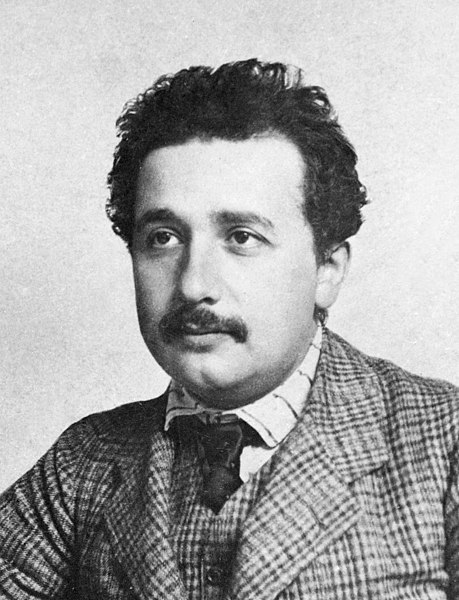It is all in the name…


It is all in the name…


| |
Natural Operations in Differential Geometry by Kolar, Michor and Slovak is a monograph that covers the modern way of thinking in differential geometry in terms of natural bundles and natural operators. The book stresses the role of naturality and functoriality in differential geometry. The book covers a lot of material including fibered manifolds, connections, Jet bundles and Weil bundles. |
I have found the book to be continually useful for a number of years now as it covers a lot of important modern material, especially jets and Weil bundles. It is a must for any serious differential geometer, but it is probably not the book to introduce you to the subject.
Chapter 1 “MANIFOLDS AND LIE GROUPS” covers manifolds, submersion & immersions, vector fields & flows, Lie groups and homogeneous spaces. This forms a general introduction to the “bread and butter” of differential geometry.
Chapter 2 “DIFFERENTIAL FORMS” introduces vector bundles, differential forms, derivations on the algebra of differential forms and the Frolicher-Nijenhuis bracket.
Chapter 3 “BUNDLES AND CONNECTIONS” deals with general fibre bundles and their connections. The definition of a general connection on a fibre bundle is given in terms of a one-form with values in the vertical vector bundle of the fibre bundle. In this chapter they discuss curvature and the special case of principal fibre bundles.
Chapter 4 “JETS AND NATURAL BUNDLES” introduces us to the notion of jets of functions between manifolds. Jets play an important and fundamental role in the theory of natural bundles which are defined as functors from the category of smooth manifolds to fibre bundles such that local diffeomorphisms of the manifold become bundle automorphisms.
Chapter 5 “FINITE ORDER THEOREMS” the authors develop a general framework for the theory of geometric objects and operators and to reduce local geometric considerations to finite order problems. A generalisation of the Peetre theorem is given for nonlinear operators.
Chapter 6 “METHODS FOR FINDING NATURAL OPERATORS” the authors present some general procedures useful for finding some equivariant maps and use these to solve concrete geometric problems.
Chapter 7 “FURTHER APPLICATIONS” discusses the Frolicher-Nijenhuis bracket, Jet functors and some topics from Riemannian geometry.
Chapter 8 “PRODUCT PRESERVING FUNCTORS” introduces us to the notion of a Weil algebra and a Weil functor. An important result here is that all product preserving natural functors are Weil functors.
Chapter 9 “BUNDLE FUNCTORS ON MANIFOLDS” here the authors discuss more general bundle functors, that is the ones that do not preserve products.
Chapter 10 “PROLONGATION OF VECTOR FIELDS AND CONNECTIONS” covers the prolongation of vector fields and connections to Weil bundles.
Chapter 11 “GENERAL THEORY OF LIE DERIVATIVES” discusses the notion of a generalised Lie derivative of a function between two manifolds. A major advantage advantage of this approach is that it enables one to study the Lie derivatives of the morphisms of fibered manifolds.
Chapter 12 “GAUGE NATURAL BUNDLES AND OPERATORS” the authors generalise some of the earlier presented notions to fiber bundles associated with and abstract principal bundle with an arbitrary structure group G.
You can find the book and some more details about the chapters here.
Hardcover: 434 pages
Publisher: Springer; 1993 edition (February 4, 1993)
Language: English
ISBN-10: 3540562354
ISBN-13: 978-3540562351

Image courtesy of www.facebook.com/IFeakingLoveScience
Pay attention please. What more can I say to my students?
 |
This years Ig Nobel prize in psychology went to Laurent Bègue, Brad Bushman, Oulmann Zerhouni, Baptiste Subra and Medhi Ourabah, for confirming that drunk people think they are more attractive than they really are. The experimental work they conducted was published in [1]. |
This effect had long been observed in the “wild”, but now we have experimental proof that the effect is real.
I might just have to confirm this myself, for science you understand. Any one fancy a beer?
Groundbreaking experimental psychology in action!
Reference
[1] “‘Beauty Is in the Eye of the Beer Holder’: People Who Think They Are Drunk Also Think They Are Attractive,” Laurent Bègue, Brad J. Bushman, Oulmann Zerhouni, Baptiste Subra, Medhi Ourabah, British Journal of Psychology, epub May 15, 2012.
 |
On the 2nd of September CERN announced that at it’s Entrance B at 17.10 on 26 August 2013 a baby boy, called Lorenzo was born! The baby was a little eager to be born and so the parents stopped at CERN to seek assistance. |
In all my 20 years at CERN, I’ve seen many things, but this is a first. In fact the last time something similar happened at CERN was 40 years ago.
Véronique Fassnacht, Head of the CERN Medical Service
Link
New hadron discovered at Entrance B (mother and baby doing fine) CERN Bulletin
 |
There is a romantic image of Albert Einstein as a lonely patent office clerk who from nowhere revolutionised our understanding of the Universe.
While it is true that Einstein’s papers of 1905 were published while he was working at the Swiss Patent Office, he was not an “outsider” and was well qualified in physics. This is all well documented, so I will not examine the details here, rather I will just highlight Einstein’s education and early achievements. |
Einstein’s disservice to physics
So we see that Einstein was well qualified in physics by the time he published his best known works in 1905. He has a diploma in mathematics and physics, and had completed his PhD studies. Einstein was an “unknown” in physics in 1905, he only just finished his PhD, but he was by no means an “outsider”.
Einstein’s biggest disservice to physics was not being able to get a teaching job in 1901. Unfortunately, finding jobs is not easy and many good people struggle today, just as they did in Einstein’s time. Anyway, this has lead to the false image of Einstein that many quacks have; “if a simple patent office worker can revolutionise physics, then so can I“.
Link
Albert Einstein – Biographical (Nobel Prize website)

As part of the Manchester Science Festival, The University of Manchester is going to the Science Spectacular. There will be a tour of research at the University and the chance to take part in some great science challenges. There will also be the opportunity to talk with some of the scientists and engineers behind the research conducted at Manchester.
If you are anywhere near, why not go along?
Link
Science Spectacular The University of Manchester
 |
If you are thinking about studying for a degree in Physics in the UK or Ireland you should check out MyPhysicsCourse. There you will find a listing of all the physics degree courses starting in 2014. |
The website is run by the Institute of Physics and The Ogden Trust.
 |
Alan Bacon, a graduate in documentary, film and TV from the University of South Wales, had a rather unusual interview at an electronics store in Cardiff, Wales. |
I ended up dancing to Around the World by Daft Punk, doing rubbish robotics in my suit in front of a group of strangers.
Alan Bacon
Well, I just hope any future job interviews I go to don’t require me to dance!
Link
Currys interview ‘humiliation’ as graduate ‘made to dance’, BBC News Wales.

3 Minute Wonder is a competition in which researchers in physics-related fields explain their work to the public in just three minutes.
The participants pitch their work to a panel of four judges and an interested but non-specialist public audience. The points awarded for how well the idea is communicated rather than the science itself. The winner and runner-up will receive a cash prize of £250 and £100 respectively, along with the chance to compete in next year’s grand final at the Institute of Physics headquarters.
Non-members of the Institute of Physics are able to enter the competition.
Follow the link below for more information.
Link
3 Minute Wonder